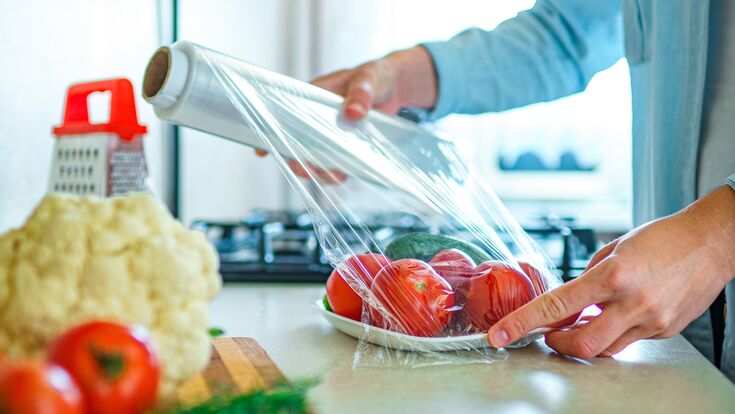Plastic film recycling : Can curbside collection increase the plastic recycling rates?

Globally only 9% of plastic gets recycled. That is the result of the Organization for Economic Cooperation and Development’s (OECD) first Global Plastics Outlook, which was published earlier this year.
To be precise 15% of plastic waste is collected for recycling but 40% of that is disposed of as residues. 50% ends up in landfill, 19% is incinerated, and 22% goes into uncontrolled dumpsites, is burned in open pits, or ends up in the environment, especially in poorer countries.
According to the outlook, plastic consumption has quadrupled over the past 30 years. Global plastics production doubled from 2000 to 2019 to reach 460 million tonnes. Plastics also account for 3.4% of global greenhouse gas emissions and are on track to unleash more emissions than coal-fired power plants by the end of the decade.
With the increase in plastic production also global plastic waste generation more than doubled from 2000 to 2019 to 353 million tonnes. The OECD report states that nearly two-thirds of plastic waste comes from plastics with lifetimes of under five years, with 40% coming from packaging, 12% from consumer goods, and 11% from clothing and textiles.
Also, almost half of all plastic waste is generated in OECD countries, according to the report. The plastic waste generated annually per person varies from 221 kg in the United States and 114 kg in European OECD countries to 69 kg, on average, for Japan and Korea.
The main reason for plastic pollution is inadequate collection and disposal of so-called macroplastics (larger debris). But the leakage of microplastics is also a serious concern.
Curbside recycling
In the US recycling rates of plastic have dropped to under 6% from almost 9% in 2018. According to the outlook, there are various ways to deal with the plastic waste problem, bans and taxes on single-use plastics being just one tool in the toolkit. The Outlook calls for greater use of instruments such as Extended Producer Responsibility schemes for packaging and durables, landfill taxes, deposit-refund, and Pay-as-You-Throw systems.
Another arrow in the quiver is the improvement of waste collection systems. While nearly three-quarters of households across the U.S. have access to curbside recycling, less than 2% of US households currently can put plastic films in their curbside collection bins. “We know consumers want to recycle more”, says Haley Lowry, Global Sustainability Director at material science expert Dow. Together with WM (formerly Waste Management), the US company started a residential plastic film recycling program. The companies are investing in infrastructure that will allow consumers to put more plastic materials – specifically film and flexible plastics, like bread bags and cling wrap – directly into their curbside recycling. “By providing a simple, curbside option for film, we’re making it easier for consumers to do their part and prevent more plastic from ending up in a landfill,” she adds. The initial pilot program in the Chicago-area community of Hickory Hills, reaches 3.500 households, with more cities to follow across the country.
“WM and Dow recognize that in order to increase recycling rates for film plastics and provide the scale we both need, we need better infrastructure in place to overcome barriers in the waste value chain to collect, process, and reuse or recycle it,” Lowry says. Once at full capacity in 2025, this effort has an initial projection estimate to divert more than 120,000 million tonnes of film plastics from landfill annually.
Recycled plastic market is growing
While still most plastics in use today are virgin, made from crude oil or gas, the global production of plastics made from recycled plastics has more than quadrupled from 6.8 million tonnes in 2000 to 29.1 million tonnes in 2019, according to the OECD report. But this staggering number is still only 6% of the size of total plastics production.
Nevertheless, the demand for this secondary raw material is constantly growing, making projects like the one from Dow and WM profitable. “Now more than ever, companies are looking for routes for all plastics to become circular,” says Lowry. “Many CPGs and packaging companies have committed to shifting 15 to 50 percent of their portfolios to be made from recycled plastics by 2025 or 2030, meaning there will be a huge increase in demand for more recycled content in the coming years.”
Dow also aims to commercialize 3 million tons of circular and renewable products. In order to be able to achieve this, the company is using technologies from mechanical and advanced recycling, as Lowry explains: “Some of these technologies exist today and some are in the R&D pipeline for tomorrow. Dow is trialling and testing the outputs of WM’s film bales to model and test quality, composition, and end market performance.” WM expects to invest over 800 million US Dollars through 2025 to improve and enhance recycling infrastructure, including specialized technology that will allow WM to sort plastic films.
Lowry sees a bright future for plastic film recycling: “We only expect the market to continue to grow. Together, WM and Dow plan to scale this model and expand films and flexible recycling programs across multiple cities.”
Even if the market for recycled plastics is growing constantly, the material is still viewed as substitute to virgin plastic. Also, the OECD outlook sees the need for setting recycled content targets. Investing in improved recycling technologies could also help to make secondary markets more competitive and profitable.


